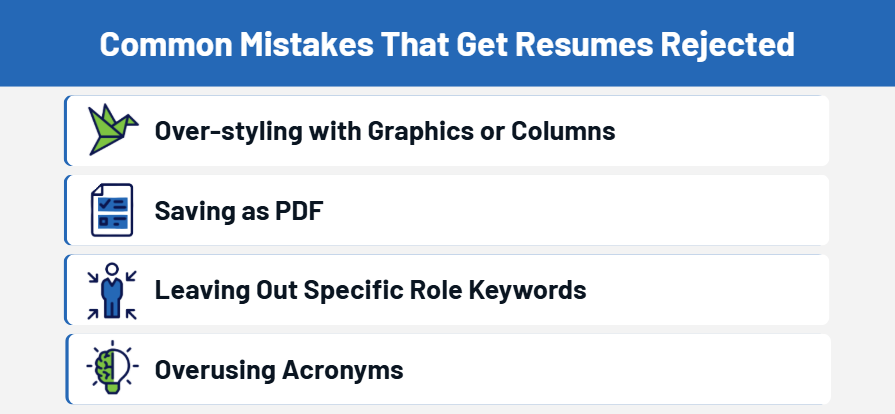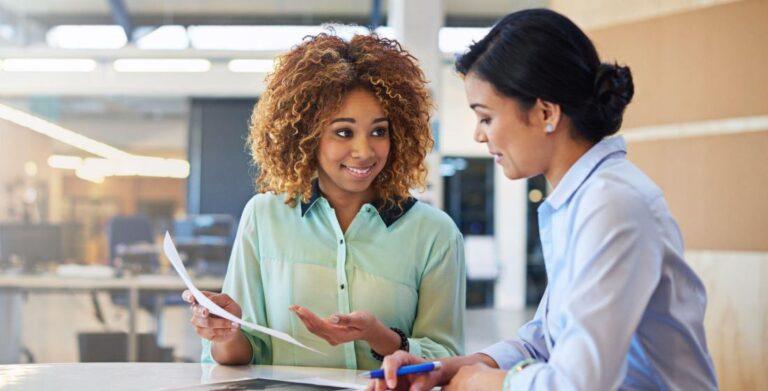Navigating AI in Recruiting: Understanding the Tech That Screens Your Application
Key Takeaways
- AI in recruiting uses tools like ATS and machine learning to screen job applications.
- Understanding how these systems work can help job seekers format and tailor their resumes for better results.
- Small changes in structure, keywords, and clarity can improve your odds of passing the AI filter.
- GDH supports candidates by matching them with roles and helping them navigate tech-enabled hiring systems.
If you’ve applied for a job and never heard back, there’s a good chance your resume didn’t make it past a machine. Today’s hiring processes rely heavily on AI in recruiting and applicant tracking systems (ATS) to filter applications. If you’re a job seeker looking to get noticed, you need to understand how these tools work.
Understanding AI in Recruiting
Modern recruitment has evolved far beyond resume piles and manual sorting. Employers now depend on recruitment technology to manage the overwhelming number of applications they receive. These systems don’t just save time—they influence who even gets seen.
The Role of AI and ATS in the Screening Process
At the heart of AI-powered recruiting are applicant tracking systems—software platforms designed to scan, sort, and rank resumes. These tools often incorporate AI to learn from recruiter behavior, identify top candidates based on job descriptions, and flag resumes that align with key requirements.
Some systems use natural language processing (NLP) to assess experience, education, and skills. Others analyze your work history for patterns of success or attrition. When job seekers understand this process, they’re better equipped to tailor their applications accordingly.
Common Tools Employers Use
You’ve likely heard of ATS platforms like Workday, Taleo, or iCIMS. These are often integrated with AI job screening tools such as HireVue, Pymetrics, or even AI features within LinkedIn Recruiter. These systems evaluate resumes, automate scheduling, assess video interviews, and even predict job fit.
Some employers also use sentiment analysis and behavioral algorithms to assess cultural fit. Others deploy AI chatbots to pre-screen candidates with automated questions before passing along those who qualify.
– Kent State University
What AI Looks For in a Resume
When a recruiter uses AI or an ATS, your resume becomes data. To be seen, that data has to be clean, structured, and rich in keywords.
Formatting and Keyword Usage
Plain formatting matters. AI tools can’t parse text in tables, headers, or footers reliably. Use a standard reverse-chronological format and stick to traditional section headers like “Experience” or “Education.”
Keywords are even more critical. These are the terms that AI pulls from the job description—like “Python,” “cloud computing,” or “user experience design.” Including these naturally and frequently increases your match score and visibility.
Soft skills also matter. Scoring algorithms often search for terms like “collaboration,” “leadership,” or “problem-solving.” The key is balance: Use keywords naturally without turning your resume into a buzzword list.
Common Mistakes That Get Resumes Rejected
Here’s where job seekers often go wrong:
- Over-styling with graphics or columns. These can break ATS parsing logic and can result in missed information.
- Saving as PDF. Some older systems can’t parse PDFs well. Use .docx or .txt formats when in doubt.
- Leaving out specific role keywords. Even if you have the right experience, vague descriptions can sink your chances.
- Overusing acronyms. Spell out all terms once, on first use. Not every ATS is smart enough to equate “PM” with “Project Manager.”

How to Optimize Your Application for AI
Now that you know what the machines want, here’s how to give your resume a fighting chance, without losing your voice in the process.
Structuring Your Resume for Readability
Resumes that pass the AI test share these characteristics:
- Use clear section headings. Stick with basics like “Skills,” “Work History,” and “Certifications” so the ATS can read them correctly.
- Stick to one-column layouts. Tables and columns often confuse parsing tools.
- Avoid fancy fonts. Choose readable fonts like Arial, Calibri, or Times New Roman.
- List job titles and dates clearly. Some systems scan for timelines and career progression. Don’t bury your titles or stretch dates with filler text.

Customizing Applications with Relevant Terms
Generic resumes rarely succeed in tech hiring pipelines. Here’s how to fine-tune each submission:
- Mirror the language of the job description. If the posting asks for “REST APIs,” don’t just say “web services.” Match the terminology.
- Reorder bullet points. Lead with experience most relevant to the job title.
- Include a keyword-rich skills section. List both hard and soft skills clearly, especially technical tools or certifications.
- Integrate certifications. Don’t hide your credentials. If you’re AWS-certified or a Scrum Master, say so in both the skills and education sections.
- Don’t copy and paste. If you use AI to help draft your resume, review and edit it carefully so before sending.
– Jobscan
How GDH Helps You Get Noticed
Optimizing your resume is just one part of a successful job search. Having a partner who understands AI in recruiting and knows what hiring managers want can give you an even greater edge.
Personalized Support and Resume Advice
At GDH, we don’t just match resumes to roles. We help people make their resumes match-ready.
Our team provides:
- Personalized feedback on resume formatting and keyword alignment. We help you shape your content for both readability and AI compatibility.
- Tailored insights into what different employers’ ATS look for. Not all systems weigh the same factors. We guide you accordingly.
- Guidance on how to improve your LinkedIn profile. Often, LinkedIn is the first place AI tools scan for passive candidates.
Tech professionals are in demand across industries, including finance, healthcare, energy, and telecommunications. GDH helps you access roles that match your experience, whether you’re focused on infrastructure, digital transformation, cybersecurity, or cloud systems.
We don’t just submit resumes. We advocate for project talent, making sure your skills are recognized and your application reaches the right decision-makers. Contact us today to get started.
Frequently Asked Questions About AI in Recruiting
What is AI in recruiting?
It refers to the use of artificial intelligence tools to screen resumes, schedule interviews, and evaluate candidates.
What does an ATS do?
An applicant tracking system scans resumes to find matches based on keywords, formatting, and experience.
Why didn’t I hear back from a job I applied to?
Your resume may not have passed the ATS filter due to formatting or missing keywords.
How should I format my resume for AI?
Use a simple, one-column layout with clear headings and job-specific keywords.
Does GDH help improve resumes?
Yes. GDH provides feedback on formatting, keyword use, and tailoring for AI systems.
Is it worth customizing my resume for every job?
Yes. Tailored resumes perform better in ATS systems and are more likely to be seen by hiring managers.








